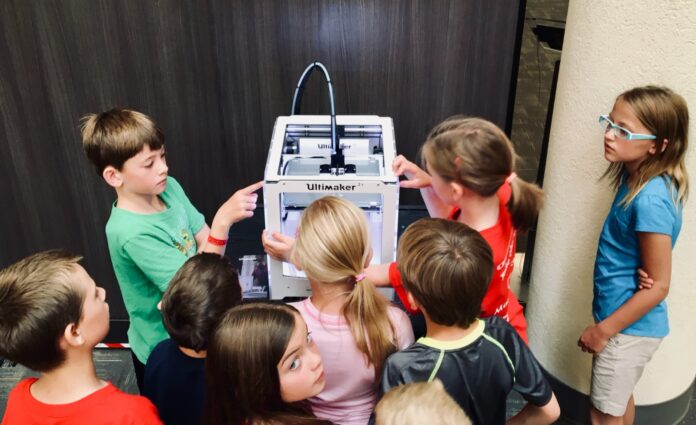Kids’ Canvas: The Ultimate Guide for Parents
Are you looking for a fun, engaging, and creative outlet for your child? Look no further than the world of kids’ canvas art! From simple paint-by-numbers projects to elaborate mixed-media masterpieces, canvas painting offers a fantastic opportunity for self-expression, skill development, and quality family time. This comprehensive guide provides everything parents need to know about kids’ canvas art, covering materials, techniques, safety, and more. Let’s dive in!
Why Choose Canvas for Kids’ Art?
Canvas provides a durable and versatile surface perfect for young artists. Unlike paper, canvas can withstand multiple layers of paint, resists tearing and wrinkling, and offers a professional look that encourages children to take pride in their creations. Here are some key benefits of using canvas:
- Durability: Canvas is strong and can handle various painting techniques, including layering, scraping, and even some light textured applications.
- Versatility: Canvas works well with acrylics, watercolors, oil paints (with supervision), and even mixed media like collage elements.
- Professional Look: The finished artwork on canvas has a polished and gallery-ready appearance, boosting your child’s confidence.
- Encourages Creativity: The smooth surface invites exploration and experimentation, fostering creativity and imaginative thinking.
- Lasting Keepsake: Canvas art creates a lasting memory, allowing you to preserve your child’s artwork for years to come.
Essential Supplies for Kids’ Canvas Painting
Setting up a successful painting session requires the right materials. Here’s a list of essential supplies:
- Canvas:
- Size: Start with smaller canvases (e.g., 8x10 inches or 11x14 inches) for younger children or beginners. Larger canvases can be great for older kids with more experience.
- Type: Pre-stretched canvas is the easiest and most convenient option. Look for canvas made of cotton or linen, depending on your preference and budget.
- Pre-primed vs. Unprimed: Pre-primed canvas is ready to paint on immediately. Unprimed canvas requires priming with gesso before use.
- Paints:
- Acrylic Paints: These are the most popular choice for kids due to their quick drying time, ease of use, and vibrant colors.
- Watercolors: Offer a softer, more transparent effect and are excellent for beginners.
- Non-Toxic Paints: Always prioritize non-toxic, washable paints, especially for younger children.
- Paintbrushes:
- Variety: Provide a range of brush sizes and shapes (round, flat, filbert) to allow for different techniques.
- Bristle Type: Consider synthetic brushes for acrylics and natural hair brushes for watercolors.
- Palette:
- Plastic Palette: Easy to clean and reuse.
- Paper Palette: Disposable and convenient.
- Palette Knife: Helpful for mixing paints and creating texture.
- Water Container: For rinsing brushes.
- Paper Towels or Rags: For wiping brushes and cleaning up spills.
- Smock or Old Clothes: To protect clothing from paint.
- Optional Supplies:
- Easel: For a more professional painting experience.
- Stencils: For younger children or those needing inspiration.
- Sponges: For creating textured effects.
- Glitter, Beads, Buttons: For mixed-media projects (use with caution, considering age and supervision).
Techniques and Tips for Painting with Kids
- Start Simple: Begin with basic shapes, colors, and techniques.
- Demonstrate and Encourage: Show your child how to hold a brush, mix colors, and apply paint. Praise their efforts and encourage experimentation.
- Focus on the Process, Not Perfection: The goal is to have fun and explore creativity, not to create a perfect masterpiece.
- Embrace Mistakes: Mistakes are learning opportunities. Encourage your child to try again or incorporate the “mistake” into the artwork.
- Experiment with Different Techniques:
- Finger Painting: A classic for young children.
- Sponge Painting: Creates textured backgrounds.
- Stenciling: Easy way to create specific shapes and designs.
- Color Mixing: Teach children how to create new colors by mixing primary colors.
- Layering: Encourage children to build up layers of paint for depth and interest.
- Supervision is Key: Always supervise young children, especially when using paints and other art supplies.
Safety Considerations for Kids’ Canvas Art
- Non-Toxic Paints: Always choose non-toxic, water-based paints, especially for younger children.
- Ventilation: Ensure adequate ventilation in the painting area.
- Protective Clothing: Use smocks or old clothes to protect clothing.
- Supervision: Constant supervision is essential, especially with younger children.
- Proper Disposal: Dispose of paint and cleaning materials properly.
- Allergy Awareness: Be aware of potential allergies to art supplies.
Canvas Art Ideas for Kids
- Animal Portraits: Encourage children to paint their favorite pets or wild animals.
- Landscape Paintings: Capture the beauty of nature, such as mountains, trees, or the ocean.
- Abstract Art: Encourage experimentation with colors, shapes, and textures without representing specific objects.
- Self-Portraits: A fun and engaging way for children to explore their identity.
- Paint-by-Numbers: Provides a structured approach for beginners.
- Holiday-Themed Art: Create festive artwork for holidays like Christmas, Halloween, or birthdays.
- Mixed-Media Projects: Incorporate collage elements, glitter, and other materials.
Canvas Maintenance and Storage
- Drying: Allow artwork to dry completely before handling or storing.
- Cleaning: Wipe the canvas with a damp cloth to remove dust or dirt. Avoid harsh chemicals.
- Storage: Store artwork in a cool, dry place, away from direct sunlight. Consider wrapping the canvas in acid-free paper to protect it.
- Displaying: Hang the artwork using picture hangers or display on an easel.
Frequently Asked Questions (FAQs)
1. What type of paint is best for kids’ canvas art?
Acrylic paints are generally the best choice for kids’ canvas art. They are non-toxic, dry quickly, and are easy to clean up. Watercolors are also a good option, especially for beginners.
2. How do I clean up paint spills?
For acrylic paint, clean up spills immediately with soap and water while the paint is still wet. For watercolors, use water and a sponge or cloth.
3. Can kids paint on canvas without priming it first?
Pre-primed canvas is ready to paint on immediately. Unprimed canvas requires priming with gesso before use. Pre-primed canvases are generally the easiest and most convenient option for children.
4. How do I encourage my child’s creativity when painting?
Provide a variety of supplies, demonstrate different techniques, and encourage experimentation. Focus on the process, not the outcome. Praise their efforts and allow them to make mistakes.
5. What size canvas is best for a beginner?
Smaller canvases, like 8x10 inches or 11x14 inches, are ideal for beginners as they are less intimidating and easier to manage.
Conclusion
Canvas painting is a rewarding activity that provides numerous benefits for children. By providing the right supplies, guidance, and a supportive environment, you can help your child unlock their creative potential and create lasting memories. Embrace the mess, celebrate the process, and enjoy the journey! Happy painting!




